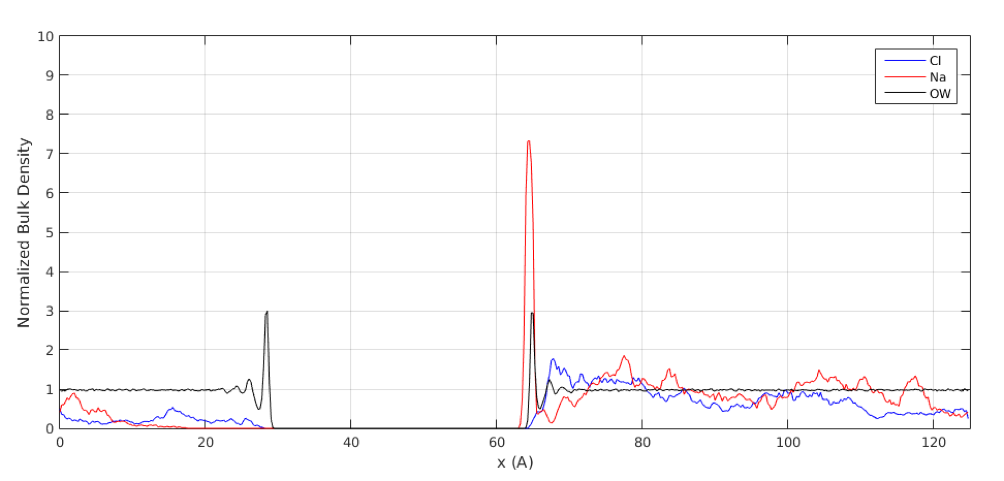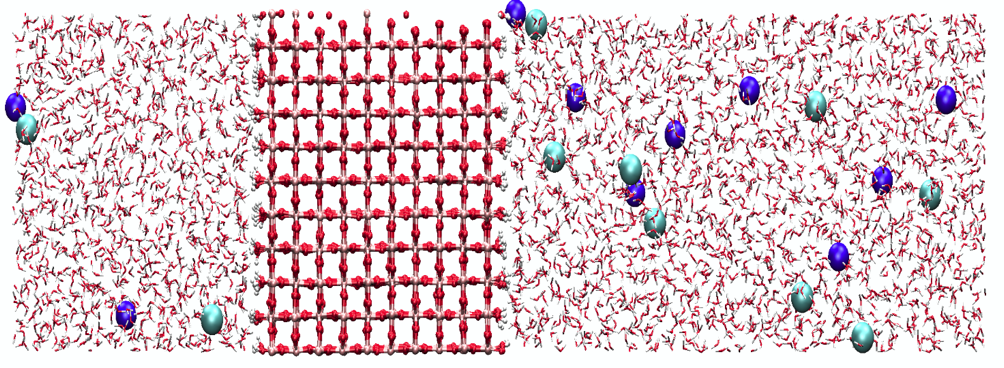Atomistic modelling – Apatite Research – Azade Yazdan Yar (PhD Student)
The formation of an oxide layer on Ti implants has been reported which contains amorphous titanium oxide or anatase and rutile (two of titanium oxide crystalline polymorphs). Rutile is thermodynamically more stable than anatase and we will first focus on rutile. It is also present after thermal treatment of NaOH treated surfaces under investigation experimentally.
Calculation of surface energy of different rutile surfaces has revealed that the (110) surface has the lowest surface energy (1.79 J.m-2) and is the most stable surface. The (110) rutile surface was hydroxylated and then was immersed in an aqueous environment which will mimic the SBF (Simulated Body Fluid). Based on SBF ionic composition, the most concentrated ionic species in SBF is Na+ and Cl- (see simulation box). We have been able to set up the rutile/water/sodium chloride system and have performed a 2 ns molecular dynamics simulation. We see that sodium ions and water seem to have a preferential affinity for the surface compared to chlorine, which may be important for the nucleation and growth of Hydroxy apatite and/or the interaction of organic species found in HBS.
Our goals in this project are:
- study interactions such as surface/organic, surface/HAP, surface/SBF components and organic/HAP
- study the effect of different crystallographic surfaces, surface charge densities and defects on the adsorption process
- to understand what are the main parameters controlling the adsorption of certain species on the biomaterial surface and how they influence hydroxyl apatite growth.
 |
 |
| Radial distribution functions of average densities of bulk for water and the Cl- and Na+ ions from Molecular Dynamics simulations– bottom figure is a snapshot from the MD simulations (Cl: green, H: white, Na: blue, O: red, Ti: light pink). |
[5]. Oliver, P. M., Watson, G. W., Kelsey, E. T. & Parker, S. C. Atomistic simulation of the surface structure of the TiO polymorphs rutile and anatase. J. Mater. Chem. 7, 563–568 (1997).